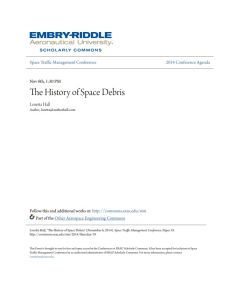Únase a getAbstract para acceder al resumen.

Únase a getAbstract para acceder al resumen.
Loretta Hall
The History of Space Debris
Space Traffic Management Conference, 2014 Conference Agenda
ERAU, 2014
¿De qué se trata?
Earth’s orbit, once uncluttered, is now a veritable mine of man-made objects.
Recommendation
This short history of space debris offers a comprehensive overview of how man-made objects have accumulated in the Earth’s orbit. Space historian Loretta Hall highlights the dangers of space debris and touches on some of the efforts to prevent further contamination. getAbstract recommends her research to members of the space community and all those with an interest in man-made environmental issues.
Summary
About the Author
Loretta Hall is the space ambassador of the National Space Society and a member of the Historical Society of New Mexico’s Speakers Bureau.
















Comment on this summary